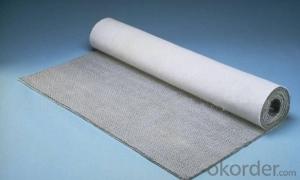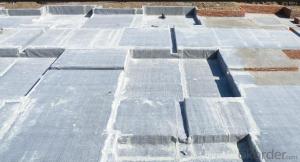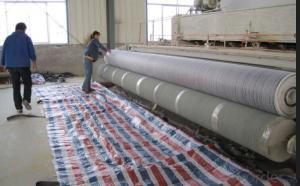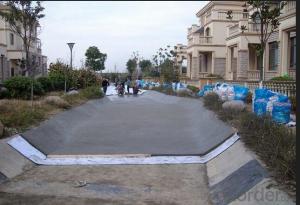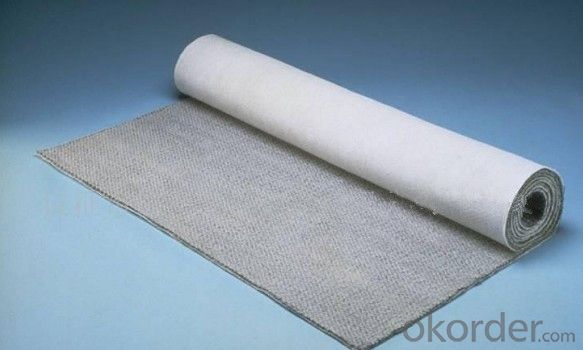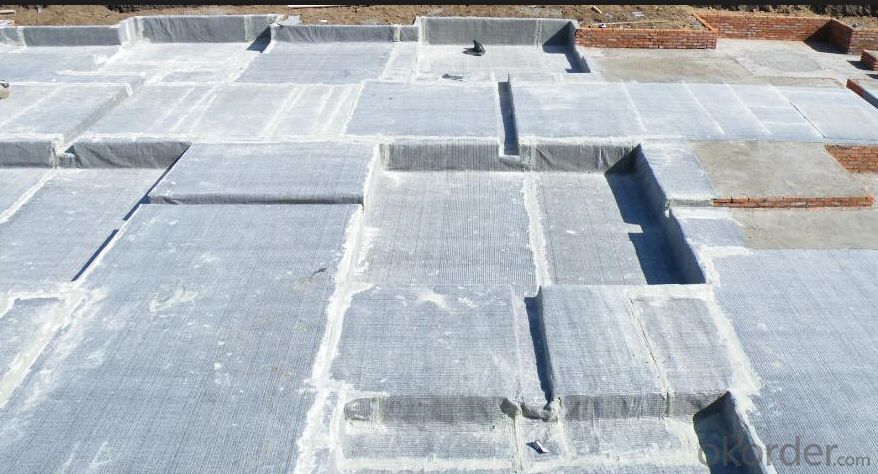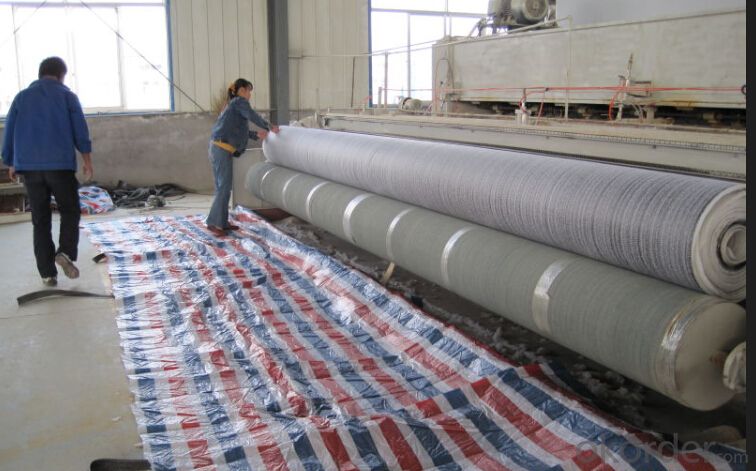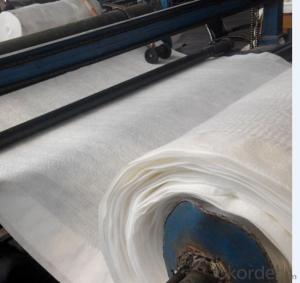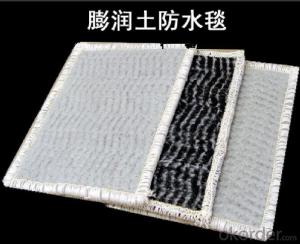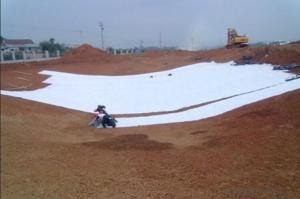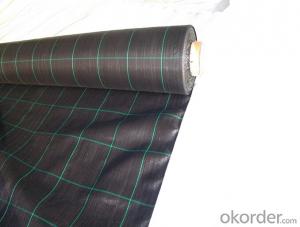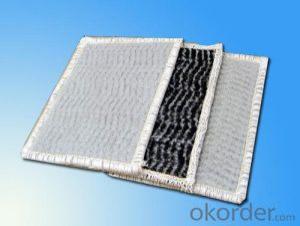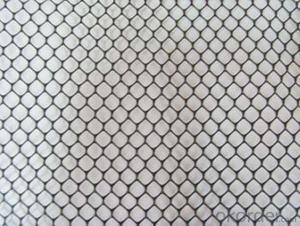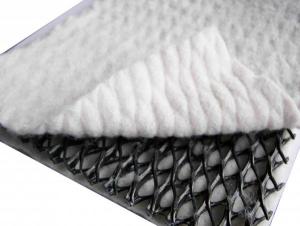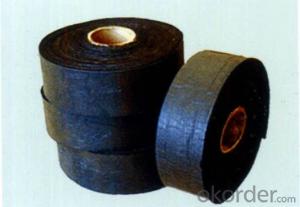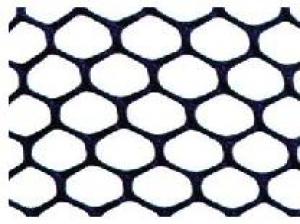Landfill and Disposal Facilities Hot sale Geosynthetic Clay Liners
- Loading Port:
- Qingdao
- Payment Terms:
- TT OR LC
- Min Order Qty:
- 5000 m²
- Supply Capability:
- 100000 m²/month
OKorder Service Pledge
OKorder Financial Service
You Might Also Like
Landfill and disposal facilities Hot sale Geosynthetic Clay Liners
Introduction of GCL
Landfill and disposal facilities Hot sale Geosynthetic Clay Liners(GCL) are high performance needle
punched environmental reinforced composites.
Combine two durable geotextile outer layers with a uniform core of natural sodium bentonite
clay to form a hydraulic barrier. Fibers from the non-woven geotextile are needle punched
through the layer of bentonite and incorporated into the other geotextile (either a woven or non-woven).
when hydrated under a confining load, the bentonite swells to form a low permeability clay layer with the
equivalent hydraulic protection of several feet of compacted clay.
Features
Comacted with clay liner, it has the advantages of small size, light weight, good flexibility and seal, easy for construction and suitable for uneven settelement Application of GCL
Applications
· Landfills Mud Pits
· Lagoons Canals
· Bund Lining Tank Lining
· Fish Farm Lining Roof Lining
· Waste Water Pits Ponds and Reservoirs
· Dams Floating Covers
· Vertical Cutoff Walls Hydraulic Structure
· Basement Lining Drip Irrigation Pond
Technical Data of GCL
Items | Testing Method | Required values |
Bentonite Swell Coefficient | ASTMD5890 | ≥ 24mL/2g |
Fluid Loss | ASTMD5891 | ≤ 18mL |
Bentonite Weight per unit | ASTMD5993 | ≥4.8kg/m2 |
Tensile Strength | ASTMD4632 | ≥400N |
Peeling Strength | ASTMD4632 | ≥65N |
Indicating Flowmeter | ASTMD5887 | ≤1 × 10-8m3/m2/sec |
Permeability Coefficient | ASTMD5887 | ≤5 × 10-225px/sec |
Tensile Strength after soaking | ASTMD5321 | ≥24kPa typical |
FAQ:
How many quantity for one 20'' container?
About 5,000m2, 16rolls
What's your delivery time?
About 15-20days against deposit received
. What's your package?
Per roll with two pieces woven bag
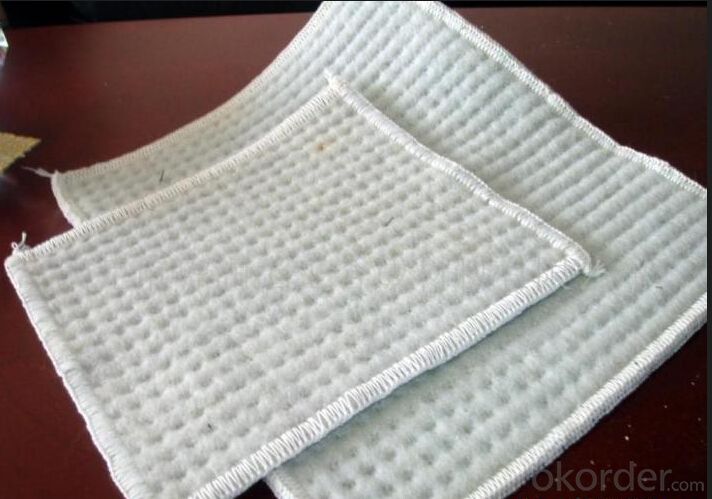
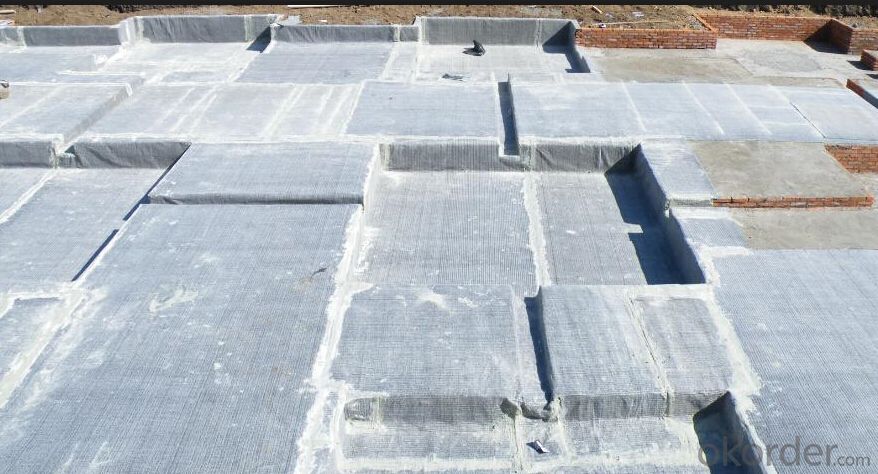
- Q: Can earthwork products be used in green building projects?
- Yes, earthwork products can be used in green building projects. These products, such as excavated soil, natural stone, and recycled aggregates, can be utilized for sustainable construction practices like earth-sheltered buildings, green roofs, and natural landscaping. By using locally sourced and recycled earthwork materials, green building projects can reduce environmental impact, promote biodiversity, and enhance energy efficiency.
- Q: What are the advantages of using geocells in earthwork?
- Geocells offer several advantages in earthwork. They provide structural support, increase load-bearing capacity, and prevent soil erosion. Geocells also help in stabilizing slopes, retaining walls, and roadways. They are cost-effective, easy to install, and promote sustainable construction practices. Additionally, geocells enhance drainage systems and reduce the need for excessive excavation and fill materials, making them a versatile and efficient solution for earthwork projects.
- Q: Can geosynthetics be used for reinforcement in road construction?
- Yes, geosynthetics can be used for reinforcement in road construction. They are commonly utilized to improve the strength, stability, and durability of roads. Geosynthetics such as geotextiles, geogrids, and geocomposites are employed to enhance the performance of various road components, including subgrade, base, and asphalt layers. These materials help distribute loads, reduce rutting and cracking, and provide long-term support to the road infrastructure.
- Q: Are there any specific earthwork products available for railway embankment reinforcement?
- Yes, there are specific earthwork products available for railway embankment reinforcement. These products are designed to provide stability and enhance the load-bearing capacity of railway embankments. They include geosynthetic materials such as geotextiles, geogrids, and geocells, which are used to reinforce the soil and prevent erosion. Additionally, other products like gabions and retaining walls can also be used for embankment reinforcement in railway projects.
- Q: What are the different weight options available in earthwork products?
- The weight options available in earthwork products can vary depending on the specific product. Some common weight options include lightweight, medium-weight, and heavy-duty options. These different weight options cater to various applications and requirements in earthwork projects, allowing for flexibility and suitability in different scenarios.
- Q: What are the specific applications of geosynthetics in earthwork projects?
- Geosynthetics have various applications in earthwork projects, including erosion control, soil reinforcement, drainage systems, and waste containment. They are commonly used as geotextiles to prevent soil erosion and stabilize slopes, as geogrids to reinforce soil and improve load-bearing capacity, and as geocomposites for drainage and filtration purposes. Additionally, geosynthetics are utilized in the construction of landfills, reservoirs, and dams to provide effective containment of waste materials and water. Overall, geosynthetics play a crucial role in enhancing the performance, durability, and sustainability of earthwork projects.
- Q: How do geosynthetic liners prevent seepage in stormwater detention ponds?
- Geosynthetic liners prevent seepage in stormwater detention ponds by providing a barrier that prevents water from infiltrating the soil beneath the pond. These liners are made of synthetic materials such as polyethylene or polypropylene, which are impermeable to water. When installed properly, they create a reliable barrier that prevents the loss of water from the pond and helps maintain the desired water level. Additionally, geosynthetic liners can also prevent the migration of pollutants from the pond into the surrounding soil and groundwater, ensuring environmental protection.
- Q: How do concrete barriers enhance safety on construction sites?
- Concrete barriers enhance safety on construction sites in several ways. Firstly, they provide a physical barrier between workers and potential hazards, such as moving vehicles or falling debris, thereby reducing the risk of accidents and injuries. Secondly, these barriers help to establish designated work zones, effectively separating construction activities from pedestrian or vehicular traffic, ensuring that workers can operate in a controlled and protected environment. Additionally, concrete barriers can also serve as noise and dust barriers, further enhancing the safety and well-being of workers by minimizing exposure to harmful elements. Overall, concrete barriers play a crucial role in preventing accidents, protecting workers, and maintaining a safe working environment on construction sites.
- Q: How do earthwork products contribute to soil moisture retention?
- Earthwork products, such as mulch, compost, and soil amendments, play a crucial role in improving soil moisture retention. These products help to create a favorable environment for water infiltration and retention by enhancing the soil's structure and increasing its water-holding capacity. Mulch, for example, acts as a protective layer, reducing evaporation and soil temperature, thereby minimizing moisture loss. Compost and soil amendments improve soil structure, increasing its ability to hold water and reducing runoff. Overall, earthwork products contribute to soil moisture retention by creating a more water-efficient and resilient soil environment.
- Q: How do earthwork products help with shoreline stabilization?
- Earthwork products, such as geotextiles, geogrids, and erosion control blankets, play a crucial role in shoreline stabilization. These products are designed to control soil erosion, prevent sediment runoff, and reinforce the stability of the shoreline. Geotextiles act as a filter, allowing water to pass through while retaining soil particles, which helps to prevent erosion and maintain the shoreline's integrity. Geogrids provide structural support by distributing the load across a wider area, improving stability and preventing soil movement. Erosion control blankets, on the other hand, protect the soil from water and wind erosion, promoting vegetation growth and strengthening the shoreline's resistance to erosion. In summary, earthwork products effectively mitigate erosion, reduce sedimentation, and enhance the overall stability of shorelines.
Send your message to us
Landfill and Disposal Facilities Hot sale Geosynthetic Clay Liners
- Loading Port:
- Qingdao
- Payment Terms:
- TT OR LC
- Min Order Qty:
- 5000 m²
- Supply Capability:
- 100000 m²/month
OKorder Service Pledge
OKorder Financial Service
Similar products
Hot products
Hot Searches
Related keywords
